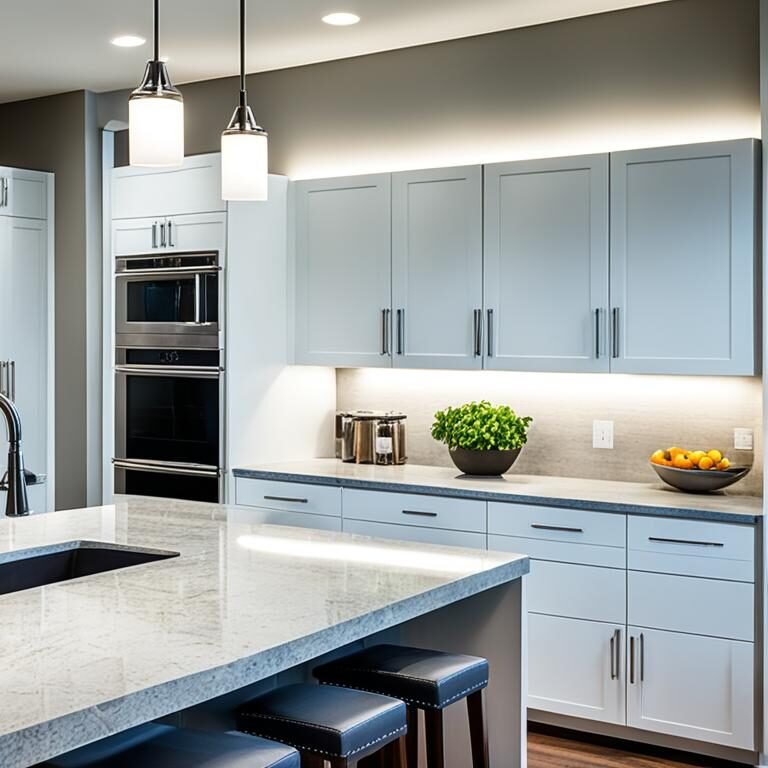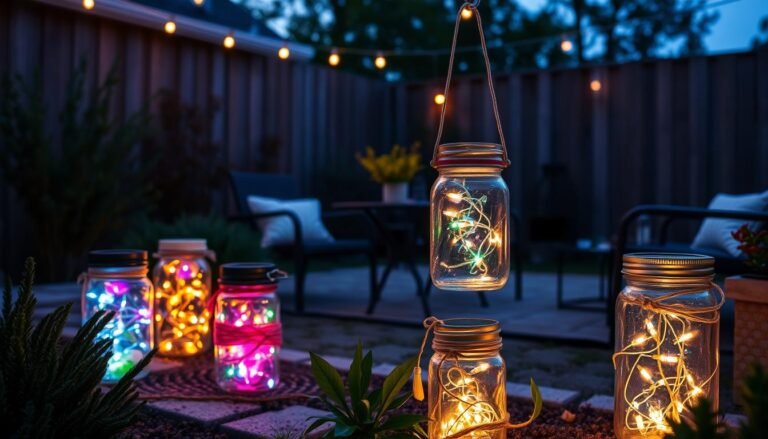Affiliate Disclosure: This post may contain affiliate links. If you make a purchase, we may earn a small commission at no extra cost to you.
Task lighting is a type of direct lighting that is specifically used for certain tasks, such as reading, cooking, sewing, or other intricate work. It provides bright and functional light to illuminate small areas and reduce eye strain. This is important for improving visibility, increasing focus, and avoiding distracting shadows.
It can be incorporated into the home through various options like lamps, wall-mounted lighting, pendants, and under-cabinet lighting. Proper task lighting not only enhances efficiency but also contributes to eye health and overall well-being.
- Task lighting is used for specific tasks like reading, cooking, and sewing.
- It provides bright and functional light to reduce eye strain.
- It improves visibility and increases focus.
- Lamps, wall-mounted lighting, pendants, and under-cabinet lighting are popular options for incorporating task lighting into the home.
- It enhances efficiency and contributes to eye health.
Types of Task Lighting
Task lighting can be added to different areas of the home using various types of fixtures. Here are some common types:
Lamps
Lamps are a simple and versatile option. You can choose between desk lamps and floor lamps depending on your needs. Desk lamps are ideal for tabletops or work desks, providing focused lighting for tasks such as reading or writing. Floor lamps, on the other hand, can be placed next to chairs or in corners to illuminate specific areas.
Wall-Mounted Lighting
Wall-mounted lighting fixtures, such as adjustable arm lamps, are commonly used near beds or chairs for reading. These fixtures can be adjusted to provide direct lighting exactly where you need it.
Pendants
Pendant lights suspended from the ceiling are a popular choice in kitchens and dining areas. They are often installed over islands or dining tables, providing focused lighting for cooking, meal preparation, and other tasks.
Under-Cabinet Lighting
Under-cabinet lighting is a great option for task lighting in kitchens and crafting rooms. These lights are installed underneath cabinets, illuminating countertop spaces and making it easier to work in these areas. Under-cabinet lighting is available in various forms, such as small round lights or long strips.
Each type of lighting offers unique benefits and can be chosen based on your specific needs and the size of your space. Whether you prefer the versatility of lamps, the adjustability of wall-mounted lighting, the aesthetics of pendant lights, or the practicality of under-cabinet lighting, there is a task lighting solution to suit your preferences.

Tips for Efficient Task Lighting
To create an efficient task lighting setup, you need to consider the light sources already present in the room and strategically place additional task lighting. By doing so, you can ensure that the lighting is complementary and provides optimal illumination for your activities. Here are some important tips to follow:
1. Consider Existing Light Sources
Before adding task lighting, assess the natural light sources in the room. For example, if you have a large window near your desk, placing a task light on the opposite side will help eliminate shadows and provide even lighting. By utilizing both natural and artificial light, you can create a balanced and well-lit environment.
2. Proper Placement of Task Lights
The placement of your task lights is crucial to avoid glare and odd shadows. When positioning desk lamps, make sure they are not directly in front of or behind your computer monitor to prevent glare and eye strain. Additionally, reading lights should be placed to the side and behind your reading area to evenly illuminate the page without casting harsh shadows.
3. Choose the Right Size and Brightness
Choosing the appropriate size and brightness of your lighting is essential for creating an optimal work environment. For smaller areas or focused tasks, such as a desk or crafting table, small pendant lights can provide sufficient illumination. On the other hand, for larger spaces like kitchen islands or dining areas, larger pendant lights can offer a broader and more evenly distributed light source.
| Lighting Type | Recommended Areas |
|---|---|
| Desk Lamps | Office desks, study areas |
| Reading Lights | Living rooms, bedrooms |
| Small Pendant Lights | Desks, crafting tables |
| Large Pendant Lights | Kitchen islands, dining areas |

By following these tips and considering factors such as light sources, proper placement, and the right size and brightness of task lighting, you can create a comfortable and practical environment for any activity.
Whether you’re working, reading, or pursuing hobbies, efficient task lighting will enhance visibility, productivity, and overall well-being.
Conclusion
Task lighting is an essential component for creating an efficient and visually comfortable workspace. By providing direct, bright light for specific tasks, such as reading, cooking, or crafting, task lighting reduces eye strain and enhances focus.
The right type of task lighting, whether it’s desk lamps, wall-mounted lighting, pendants, or under-cabinet lighting, plays a critical role in illuminating workspaces and improving visibility.
When setting up task lighting, it is important to consider existing light sources in the room. By strategically placing task lights in complementary spots, you can eliminate shadows and evenly illuminate your workspace.
Proper placement is crucial to avoid glare or odd shadows, ensuring a comfortable environment. For example, when using desk lamps, position them away from monitors to prevent glare, while reading lights are best placed to the side and behind to evenly light your space.
Efficiency is key in any workspace, and task lighting contributes to that by enhancing productivity. By prioritizing task lighting and creating a well-lit workspace, you can improve efficiency and create a visually comfortable environment for various activities.
Additionally, task lighting has a positive impact on eye health, reducing eye strain and promoting overall well-being.
Incorporating task lighting into your workspace not only improves visibility and efficiency but also contributes to your overall comfort and eye health. By choosing the right type, considering existing light sources, and placing the lights strategically, you can create a workspace that enhances your focus and well-being.
Invest in task lighting to enhance productivity, create a visually comfortable workspace, and prioritize your eye health.
We hope this article has been helpful for the implementation of your projects.
Check out our FREE Calculators on our Resources Page
Source Links
- https://www.lrc.rpi.edu/patternbook/techniques/task.asp
- https://www.ergodirect.com/blog/what-is-task-lighting/








